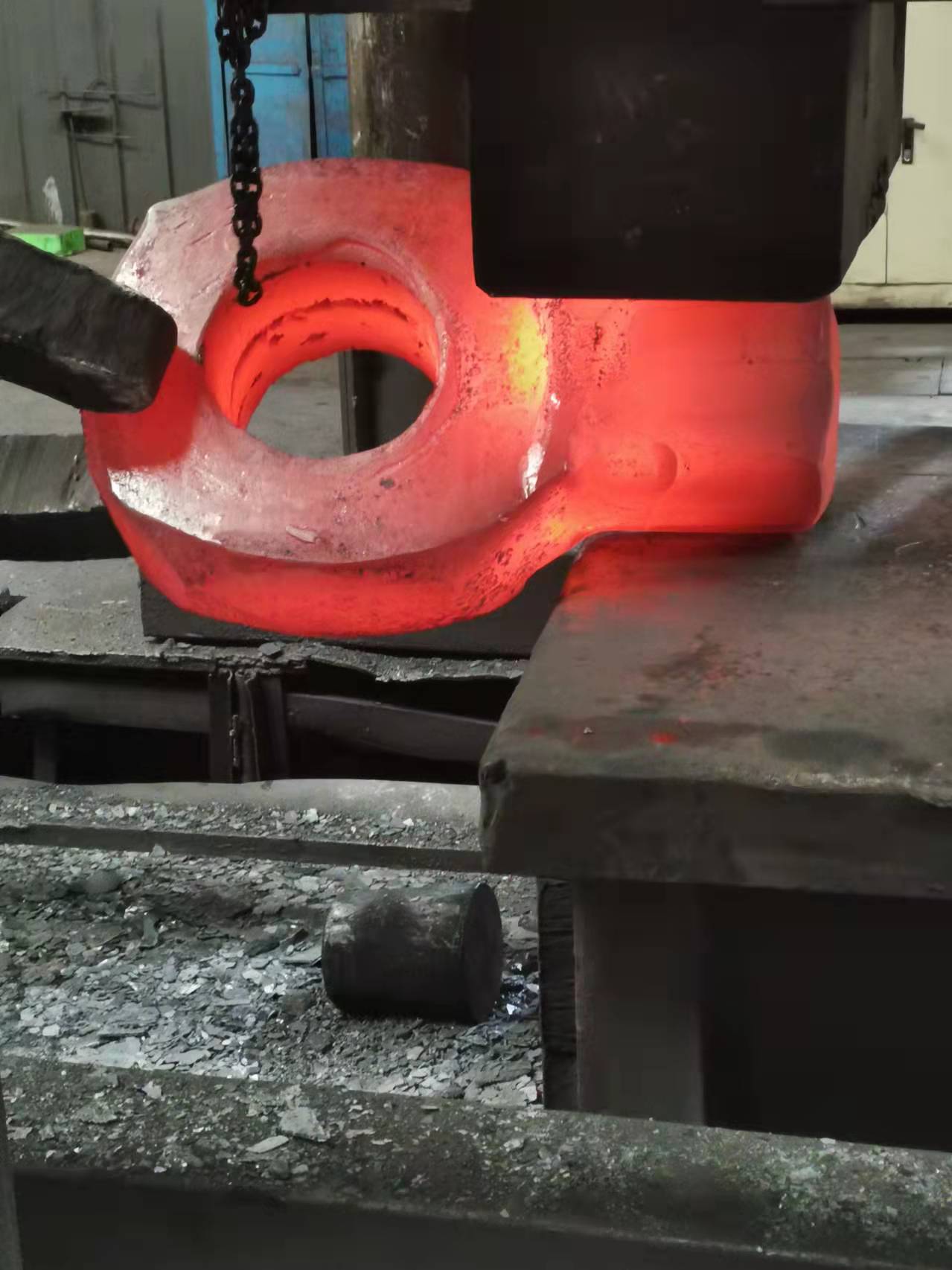Introduction of decarbonization in forging factory production
2022-08-26
Forging factory production forgings in high temperature heating, metal surface carbon and furnace gas in the oxidation gas and some reducing gas chemical reaction, methane or carbon monoxide, resulting in steel surface carbon content is reduced, this phenomenon is called decarbonization phenomenon.
First, the characteristics of decarbonization
1. Due to the oxidation of carbon in the decarbonized layer, the amount of surface cementation (Fe3C) decreases in the metallographic structure;
2. The carbon content of the surface layer is significantly lower than that of the inside of the chemical composition.
Two, the factors affecting the decarbonization of forgings
It's similar to what we did with oxidation
1. Furnace gas composition: H2O(gas) with strong decarbonization ability, followed by CO2 and O2.
2. Heating temperature: the longer the heating time, the more serious the decarbonization.
3, heating time: the longer the time, the thicker the decarbonization layer.
4. Chemical composition: it is an intrinsic factor. The higher the carbon content in steel, the greater the decarbonization tendency. Elements such as W, A1 and Co can increase the decarbonization, while Cr and Mn can prevent the decarbonization. Si, Ni and V have no effect on the decarbonization of steel.
Poor control of decarbonization in the production of forgings can reduce the surface strength of forgings, wear resistance, fatigue strength and malleability, and the forging cracking may occur during heat treatment.
First, the characteristics of decarbonization
1. Due to the oxidation of carbon in the decarbonized layer, the amount of surface cementation (Fe3C) decreases in the metallographic structure;
2. The carbon content of the surface layer is significantly lower than that of the inside of the chemical composition.
Two, the factors affecting the decarbonization of forgings
It's similar to what we did with oxidation
1. Furnace gas composition: H2O(gas) with strong decarbonization ability, followed by CO2 and O2.
2. Heating temperature: the longer the heating time, the more serious the decarbonization.
3, heating time: the longer the time, the thicker the decarbonization layer.
4. Chemical composition: it is an intrinsic factor. The higher the carbon content in steel, the greater the decarbonization tendency. Elements such as W, A1 and Co can increase the decarbonization, while Cr and Mn can prevent the decarbonization. Si, Ni and V have no effect on the decarbonization of steel.
Poor control of decarbonization in the production of forgings can reduce the surface strength of forgings, wear resistance, fatigue strength and malleability, and the forging cracking may occur during heat treatment.

Previous:Main classification of forging
X
We use cookies to offer you a better browsing experience, analyze site traffic and personalize content. By using this site, you agree to our use of cookies.
Privacy Policy



